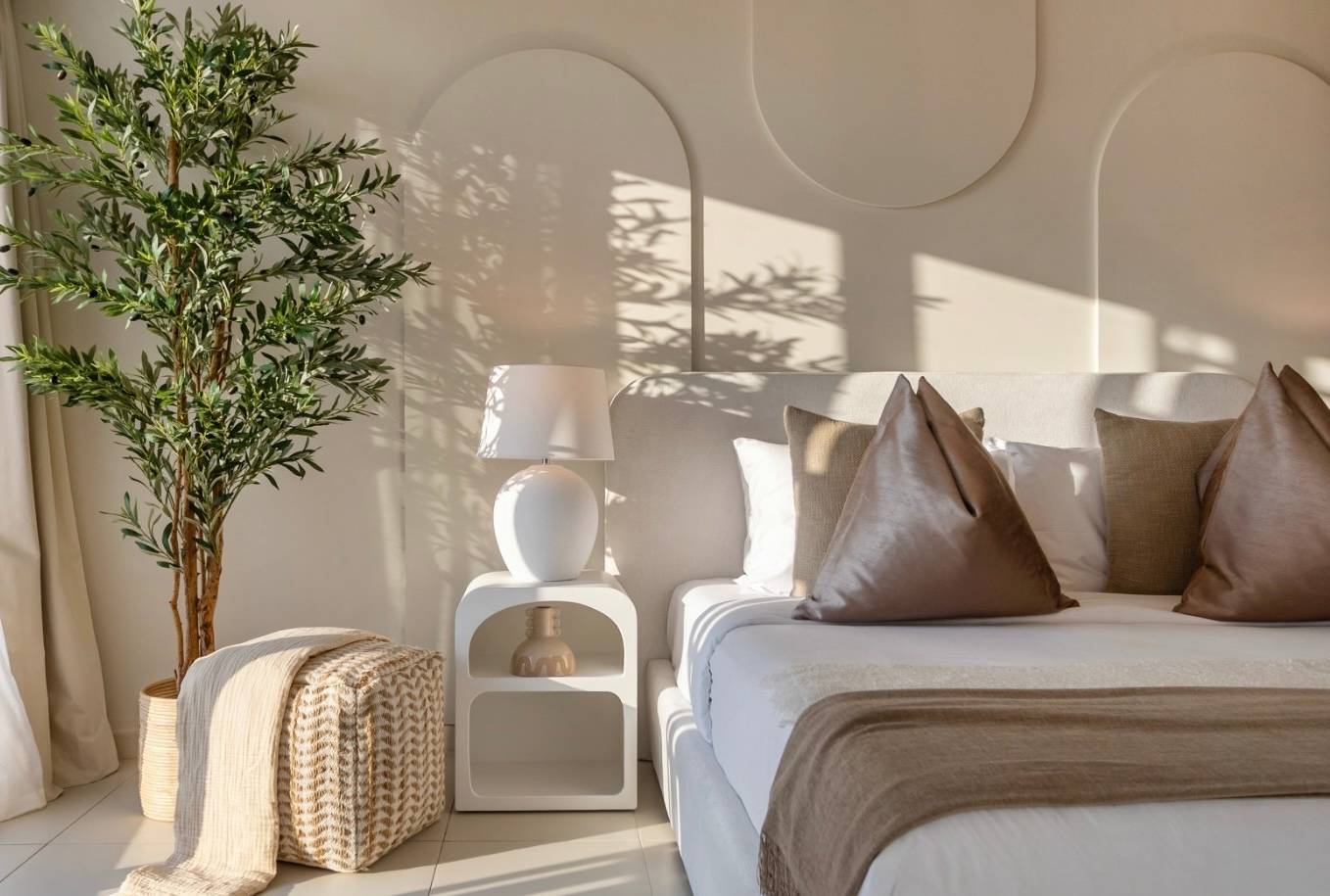
The Anatomy of an Atmosphere: How We Design a Feeling, Not Just a Room
Walk into a space that truly captivates you. Pause for a moment and consider the source of its magic. It is rarely a single object—not the statement chandelier, not the exquisite marble, not the art on the wall. Instead, it is something intangible, a quality that settles over you. It is the palpable sense of calm in a bedroom that seems to slow your breathing, the quiet hum of sophistication in a lounge that invites conversation, the creative energy in a study that sharpens your focus.
This is its atmosphere. And for us, it is everything.
In the world of luxury interior design, the creation of beautiful rooms is a given. The selection of fine materials and iconic furniture is standard practice. But the true art, the work that separates the exceptional from the merely excellent, lies in designing what cannot be itemised on an invoice: a feeling. We are not just decorators of space; we are architects of atmosphere. It’s an approach that moves beyond the visual to orchestrate a symphony of sensory experiences, crafting environments that resonate on a deeper, more human level.
So, how do we dissect and design something as ethereal as a feeling? We begin by understanding that an atmosphere is born from the interplay of invisible forces. It is sculpted by light, given voice by texture, coloured by emotion, and shaped by form. It is a holistic composition where every element, no matter how subtle, plays a crucial role.
Light: The Silent Sculptor of Space
Light is the first and most powerful tool in our arsenal. It is the primary animator of a room, with the power to dictate mood, define shape, and direct the eye. We think of light not as a utility, but as a living material to be harnessed and shaped. In a city like Dubai, blessed with an abundance of brilliant sun, our first dialogue is always with the natural light.
We don’t seek to block this powerful light, but to tame it, to filter it, to invite it inside on our own terms. It’s about creating a dance between the interior and the world outside. Imagine floor-to-ceiling windows dressed in fine, translucent linen sheers. They soften the harsh midday glare into a gentle, ethereal glow, bathing the room in a serene light while maintaining a connection to the vibrant cityscape beyond. We might employ modern interpretations of mashrabiya screens, their intricate patterns casting dynamic, shifting shadows across a floor, marking the slow, poetic passage of time from sunrise to sunset. This is how a room breathes with the rhythm of the day.
When the sun descends, the role of artificial light begins. Here, our philosophy is one of layering, creating a rich and adaptable luminous landscape. This isn’t about simply illuminating a room; it’s about painting it with pools of light.
- The Ambient Layer: This is the foundational glow, the soft, general illumination that makes a space feel warm and welcoming. It might be the gentle wash of light from a hidden cove in the ceiling or the diffuse radiance of a grand, sculptural chandelier that acts as the room’s jewellery.
- The Task Layer: This is focused, functional light, designed for purpose and precision. It is the elegant brass lamp arching over an armchair to create a perfect reading nook, the discreet downlights that illuminate a kitchen island, or the focused beam that makes a vanity a place of clarity.
- The Accent Layer: This is the drama. It is the pinpoint spotlight that transforms a sculpture into a hero, the wall-washers that graze a textured stone surface to highlight its rugged beauty, or the uplighting behind a plant that casts fascinating organic shadows.
By weaving these layers together and placing them on intelligent control systems, we empower our clients to be the conductors of their own atmosphere. With the touch of a button, a room can transition from a bright, energizing space for a morning meeting to an intimate, low-lit sanctuary for an evening of quiet reflection. Light, in our hands, is not just for seeing; it is for feeling.
Texture: The Language of Touch
If light is how a room looks, texture is how it feels. In an increasingly digital world, the power of the tactile is more profound than ever. A space devoid of textural variation can feel flat, sterile, and uninviting, no matter how beautiful it appears in a photograph. We design for the hand as much as the eye, creating a subconscious dialogue that invites touch and fosters a sense of grounded luxury.
A rich textural palette adds depth and complexity. It’s a language of contrasts and complements. Consider the sensation of stepping from a cool, mirror-polished marble floor onto a plush, hand-knotted silk rug. That single transition is a moment of pure sensory delight—a shift from sleek grandeur to enveloping comfort. It’s the feeling of running your hand over the smooth, cool surface of a lacquered cabinet, then across the rough, honest grain of an ancient olive wood table.
We build this language throughout a space. It’s in the raw, organic feel of woven raffia wall-coverings, the buttery softness of full-grain leather on a sofa, the heavy drape of velvet curtains, and the cool, solid feel of a custom-forged bronze door handle. Each material choice is an invitation to connect with the space on a physical level. This tactile richness is what transforms a house into a home, making it a place of comfort and sensory nourishment, a space that holds you and reassures you through the simple power of touch.
The Psychology of Colour and Form
While light and texture create the subconscious foundation, colour and form provide the narrative and structure. Colour is the most direct line to emotion, and our approach goes far beyond simple psychology. Any designer can tell you that blue is calming. We are interested in how a specific, complex shade of inky midnight blue, paired with warm brass and rich walnut, can create a feeling of cocooning, intellectual sophistication.
We build palettes that are nuanced and deeply personal, derived from our client’s vision, a piece of art they love, or the subtle hues of the desert landscape. It’s about creating a harmonious world of colour that flows from one space to the next, sometimes in bold statements, other times in whispers and hints.
Form, meanwhile, dictates how you move and interact within a space. It is the silent choreographer of your experience. The gentle, welcoming curve of a large, semi-circular sofa doesn’t just offer a place to sit; it encourages congregation and conversation. The strong, clean vertical lines of floor-to-ceiling bookshelves can lend a room a sense of grandeur and intelligence. The low, horizontal profile of modern Italian furniture can create a feeling of stability and calm. We consider the empty spaces—the negative space—as carefully as the objects themselves, ensuring that the flow through a home feels natural, effortless, and intuitive.
The Synthesis of Sensation
Ultimately, a truly resonant atmosphere is not the result of any single one of these elements. It is the product of their masterful synthesis. It’s the way the morning light catches the subtle metallic threads in a textured wallpaper, how the smooth, cool marble floors reflect the soft, ambient glow of a hidden light source, and how the deep, comfortable form of a sofa invites you to relax and feel the softness of its velvet upholstery.
Our work is to be the composers of this complex symphony. We orchestrate every detail to contribute to a singular, cohesive feeling. The goal is to create a space that not only reflects who you are but also shapes how you feel. It is to design an environment that becomes a seamless, supportive, and inspiring backdrop to your life. That is the ultimate luxury. That is the soul of design.



Leave a Reply